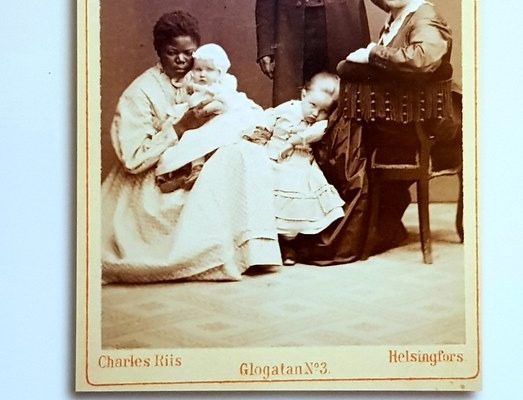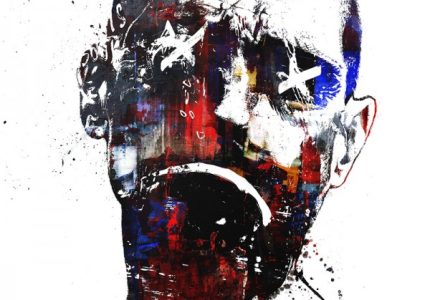History of Graphic Design and Illustration
The history of graphic design and illustration is a fascinating journey that traces the evolution of visual communication from ancient times to the modern digital era. Throughout the centuries, artists and designers have used various techniques and mediums to convey messages, tell stories, and influence culture. From the earliest cave paintings and illuminated manuscripts to the innovative digital artwork of today, the development of these fields reflects technological advances, cultural shifts, and changing societal values. Understanding this history offers valuable insights into how visual language shapes our world and continues to inspire creativity.
Early Beginnings and Origins
The history of graphic design and illustration dates back to ancient times, where early humans used symbols and images to communicate ideas and tell stories. The origins can be traced to prehistoric cave paintings, which served as visual storytelling tools. In ancient Egypt, hieroglyphics combined art and language, functioning as both communication and decoration. During the Middle Ages, illuminated manuscripts showcased intricate illustrations that complemented written texts. The Renaissance period saw the rise of printmaking techniques, allowing for widespread dissemination of artistic images and ideas. As technology advanced, especially with the invention of the printing press, graphic design and illustration evolved rapidly, shaping visual culture and communication methods throughout history.
Evolution Through the 20th Century
The history of graphic design and illustration is a rich narrative that chronicles the evolution of visual communication from early artistic expressions to the sophisticated digital techniques of today. Throughout the 20th century, these fields experienced revolutionary changes driven by technological advancements, cultural shifts, and new artistic movements.
- Early 20th Century: The rise of modernism brought about minimalism and functional design, influenced by movements like Bauhaus and Art Deco. Artists and designers focused on simplicity, geometric forms, and the integration of art into everyday life.
- Mid-20th Century: The mid-century era saw the development of corporate branding and advertising. The use of bold typography, striking imagery, and innovative layouts became prominent, exemplified by designers like Paul Rand and Saul Bass.
- Late 20th Century: The advent of computer technology transformed graphic design and illustration. Desktop publishing and digital tools allowed for unprecedented flexibility and creativity, leading to the emergence of new styles and multimedia integration.
- Influential Styles and Movements: Throughout the century, styles such as Pop Art, Psychedelic Art, and Postmodernism influenced graphic design, each emphasizing distinct aesthetics and cultural commentary.
- Globalization and Cultural Exchange: Increased connectivity facilitated the blending of diverse visual traditions, enriching the vocabulary of graphic design and illustration worldwide.
Digital Revolution and Modern Trends
The history of graphic design and illustration traces back to ancient times, where early civilizations used symbols and images to communicate ideas. During the Renaissance, artists like Leonardo da Vinci elevated visual storytelling through detailed drawings and prints. The invention of the printing press in the 15th century revolutionized dissemination, making illustrations accessible to the masses. In the 20th century, modernist principles introduced clarity, simplicity, and function into design, influencing everything from advertising to packaging. The digital revolution in the late 20th and early 21st centuries transformed the field, enabling designers to create, edit, and share work instantly using computers and sophisticated software. This shift led to the rapid growth of digital illustration, motion graphics, and interactive design, ushering in a new era of creativity. Today, modern trends emphasize minimalism, bold typography, user experience, and sustainable practices, reflecting the evolving role of graphic design and illustration in a digital, globally connected world.
Fundamental Principles of Graphic Design
Fundamental principles of graphic design serve as the foundation for creating visually appealing and effective visual communication. These principles guide designers in organizing elements such as color, typography, layout, and imagery to convey messages clearly and attractively. Understanding these core concepts is essential for producing cohesive and impactful designs in the fields of graphic design and illustration.
Balance and Alignment
Fundamental principles of graphic design, such as balance and alignment, are essential for creating visually appealing and effective compositions. Balance refers to the distribution of visual weight within a design, ensuring that no part feels heavier or more dominant than others, which helps create harmony and stability. It can be achieved through symmetrical, asymmetrical, or radial arrangements, depending on the desired aesthetic. Alignment, on the other hand, involves arranging elements in a way that visually connects and organizes content, guiding the viewer’s eye smoothly across the design. Proper alignment contributes to clarity, orderliness, and a professional appearance, making the overall composition more cohesive and engaging. Mastering these principles enhances the clarity and impact of graphic design and illustration, enabling designers to communicate their message effectively.
Contrast and Hierarchy
Fundamental principles of graphic design, such as contrast and hierarchy, are essential for creating effective and visually appealing compositions. Contrast involves using differences in color, size, shape, or texture to make elements stand out and guide the viewer’s attention. Hierarchy organizes content in a way that directs the viewer’s focus to the most important information first, then moving to less critical details. Together, contrast and hierarchy help establish clarity, emphasize key messages, and improve overall readability in design and illustration projects.
Repetition and Consistency
Repetition and consistency are fundamental principles of graphic design that help create harmony and unity within a visual composition. Repetition involves using the same elements, such as colors, shapes, or fonts, throughout a design to establish a cohesive look. This technique guides the viewer’s eye and reinforces the overall message. Consistency ensures that these repeated elements are applied uniformly, maintaining a sense of order and professionalism. Together, repetition and consistency make a design more recognizable, memorable, and easier to navigate, which is essential in effective graphic design and illustration.
Proximity and Spacing
In graphic design and illustration, the fundamental principles of proximity and spacing are essential for creating visual harmony and clarity. Proximity involves grouping related elements closely together to indicate their connection, making the design easier to understand and navigate. Proper spacing between elements helps to reduce clutter, improve readability, and establish a clear hierarchy within the composition. When used effectively, proximity and spacing guide the viewer’s eye, enhance visual flow, and contribute to a balanced and aesthetically pleasing design.
Types of Graphic Design
Graphic design encompasses a wide range of visual communication styles, each serving different purposes and audiences. From branding and advertising to digital media and print, various types of graphic design help convey messages effectively and creatively. Understanding the different categories can inspire designers and clients alike to choose the right approach for their projects.
Branding and Identity
Graphic design and illustration encompass a wide range of visual communication methods, with various types of design serving different purposes. One key area is branding and identity, which focuses on creating a distinct visual personality for companies, products, or services. This includes logo design, color schemes, typography, and overall visual style that helps establish recognition and trust among consumers.
Within branding and identity, there are several specific types such as corporate branding, which emphasizes the overall perception of a business; product branding, aimed at individual products or lines; and personal branding, which helps individuals stand out in their professional fields. These types work together to build a cohesive and memorable visual presence that communicates the core values and personality of the brand.
Advertising and Marketing
Graphic design and illustration encompass various styles and approaches used to communicate ideas visually. These fields play a crucial role in advertising and marketing by creating compelling visual messages that capture the audience’s attention and convey brand identity effectively.
- Logo Design: Creating unique symbols or marks that represent a brand or company.
- Print Design: Designing brochures, posters, flyers, and packaging that are physically printed and distributed.
- Digital Design: Developing visuals for websites, social media, and digital advertisements.
- Illustration: Producing custom artwork for books, magazines, branding, and multimedia projects.
- Brand Identity Design: Crafting visual elements such as color schemes, typography, and imagery to develop a cohesive brand image.
- Advertising Graphics: Designing visual content for ads across various platforms to promote products or services.
- Motion Graphics: Incorporating animation and moving visuals for videos, online content, and presentations.
Web and User Interface Design
Graphic design encompasses various types that serve different purposes, including visual identity, marketing, editorial, and packaging design. Each type focuses on conveying specific messages through visual elements to target audiences effectively. Web design is a specialized branch that involves creating engaging, functional, and user-friendly websites, combining aesthetics with usability. User interface design, a subset of web design, concentrates on optimizing the interaction between users and digital products, ensuring intuitive navigation and accessibility. Together, these fields play a vital role in shaping visual communication and enhancing user experiences across digital and print media.
Publication Design
Publication design is a vital branch of graphic design that focuses on the creation and organization of content for various print and digital media. It involves designing magazines, newspapers, books, brochures, and catalogs with an emphasis on readability, visual appeal, and effective communication. This type of design combines typography, imagery, layout, and color to craft engaging and functional pages that attract and inform readers. By carefully considering the flow of information and visual hierarchy, publication designers ensure that the content is both aesthetically pleasing and easy to navigate, enhancing the overall reader experience.
Packaging Design
Graphic design encompasses various specialized fields, including packaging design, which plays a vital role in visual communication and brand identity. Different types of graphic design serve distinct purposes, from creating visually appealing layouts to conveying messages effectively.
- Brand Identity Design: Focuses on creating logos, color schemes, and overall visual styles that represent a brand.
- Advertising Design: Involves designing promotional materials such as posters, banners, and digital ads to attract attention and promote products or services.
- Print Design: Encompasses magazines, brochures, flyers, and other printed materials that require careful layout and typography.
- Web Design: Includes designing websites, landing pages, and user interfaces that prioritize usability and aesthetic appeal.
- Packaging Design: Specializes in creating the exterior packaging of products to attract consumers, protect the product, and communicate brand values.
Packaging design is a crucial aspect of product presentation, combining creative illustration, structural layout, and branding elements to enhance product visibility and appeal on retail shelves.
Illustration Techniques and Styles
Illustration techniques and styles are essential components of graphic design, enabling artists to convey messages, evoke emotions, and create visually engaging images. From traditional methods like pencil and watercolor to modern digital tools, a variety of approaches exist to bring creative visions to life. Understanding different styles, such as realism, abstraction, and minimalism, allows artists to choose the most effective way to communicate their ideas and connect with their audiences.
Traditional Illustration Methods
Traditional illustration methods encompass a variety of techniques that have been used by artists to create visual art before the advent of digital tools. These methods include drawing with pencils, pens, and ink, as well as painting with watercolors, tempera, gouache, and oils. Artists often begin with sketches on paper, developing their compositions and details through careful layering and shading. Techniques such as cross-hatching, stippling, and blending are employed to create texture, depth, and contrast. The use of different mediums allows for a wide range of expressive styles, from delicate line work to bold, vibrant washes of color. Traditional illustration methods are valued for their tactile quality and unique character, which digital techniques may sometimes lack. Many modern illustrators incorporate these classic techniques into their work, blending traditional skills with contemporary concepts in order to produce compelling visual narratives within graphic design and illustration projects.
Digital Illustration Approaches
Illustration techniques and styles encompass a wide range of methods used to create visual representations, each bringing a unique aesthetic and emotional tone to a project. Traditional techniques include watercolor, ink, pencil sketches, and collage, while contemporary styles often integrate digital tools to achieve precise, vibrant, and versatile results. Popular illustration styles include realism, minimalism, abstract, cartoon, and fantasy, each serving different purposes within graphic design. Mastering various techniques allows illustrators to adapt their work to suit diverse client needs and visual narratives.
Digital illustration approaches leverage software such as Adobe Photoshop, Illustrator, Procreate, and other specialized tools to produce both detailed and stylized images. These approaches enable artists to experiment with layers, brushes, textures, and effects, offering immense flexibility and efficiency. Common digital techniques involve vector art for clean, scalable images, raster-based painting for detailed shading and textures, and mixed media combining traditional textures with digital enhancements. Digital illustrations are integral to modern graphic design, enabling rapid iterations, easy modifications, and integration into various media platforms with high quality and clarity.
Popular Illustration Styles
Illustration techniques and styles encompass a wide range of methods used to create visual artwork for various purposes. Artists may employ traditional methods like watercolor, ink, or pencil sketches, or digital tools such as Adobe Illustrator and Photoshop to produce their work. The choice of technique often influences the overall aesthetic and message of the illustration, allowing for unique expression and expression of ideas.
Popular illustration styles in graphic design include flat design, characterized by simple shapes and bold colors; minimalism, which uses limited elements to convey messages efficiently; and hand-drawn or sketch styles that evoke a personal, organic feel. Other well-known styles include vector illustrations, 3D renderings, surrealism, and comic or cartoon art. Each style serves different purposes, from playful and approachable imagery to highly detailed and realistic visuals, catering to diverse audiences and projects.
Mixed Media and Experimental Techniques
Illustration techniques and styles encompass a wide range of methods used to create visual narratives, from traditional drawing and painting to digital art forms. Artists often experiment with different line work, shading, and color application to develop unique aesthetics that communicate mood and message effectively. Mixed media involves combining various artistic materials and tools, such as ink, watercolor, collage, and digital elements, to add depth and texture, creating dynamic and layered visuals. Experimental techniques push boundaries by exploring unconventional processes, like using resist methods, collage, or digital glitches, to produce innovative and captivating illustrations. These approaches not only enhance visual interest but also allow artists and designers to express complex ideas and emotions in distinctive ways within the realm of graphic design and illustration.
Tools and Software in Graphic Design and Illustration
Tools and software play a crucial role in the world of graphic design and illustration, enabling artists and designers to bring their creative visions to life with precision and efficiency. From powerful image editing programs to sophisticated vector graphics generators, these digital resources have transformed the creative process, providing a wide array of features and capabilities. As technology advances, the range and functionality of design tools continue to expand, opening up new possibilities for innovative and captivating visual content.
Adobe Creative Suite (Photoshop, Illustrator, InDesign)
Tools and software play a crucial role in the field of graphic design and illustration, enabling artists and designers to bring their creative visions to life with precision and efficiency. Among the most popular and widely used software suites is Adobe Creative Suite, which offers a comprehensive set of tools tailored for various aspects of design. Adobe Photoshop is primarily used for photo editing, digital painting, and creating detailed raster images, making it essential for retouching and compositing work. Adobe Illustrator specializes in vector graphic design, allowing artists to create scalable logos, icons, and illustrations with crisp, clean lines. Adobe InDesign is the go-to software for layout design, used extensively in publishing for creating magazines, brochures, and multi-page documents. Together, these programs provide a versatile ecosystem that supports all phases of the graphic design and illustration process, from concept development to final production.
Procreate and Digital Drawing Tablets
Tools and software play a crucial role in modern graphic design and illustration, providing artists with innovative ways to create and refine their work. Among these, Procreate has gained immense popularity for its intuitive interface, extensive brush library, and powerful features that cater to both beginners and professional artists. Digital drawing tablets, such as Wacom and Huion, complement software like Procreate by offering a natural drawing experience through pressure-sensitive styluses and high-resolution screens. These tools enable designers to execute complex illustrations with precision, flexibility, and efficiency, ultimately expanding creative possibilities in the realm of graphic design and illustration.
Open Source and Alternative Software
Tools and software play a crucial role in the realm of graphic design and illustration, enabling artists and designers to bring their creative visions to life. They range from sophisticated commercial programs to accessible open-source alternatives that cater to various skill levels and project requirements. These tools facilitate tasks such as image editing, vector illustration, layout design, and digital painting, making the creative process more efficient and versatile.
Popular professional software like Adobe Photoshop, Illustrator, and InDesign dominate the industry but often come with high subscription costs. Fortunately, numerous open-source and alternative options are available, offering powerful features without the financial burden. Inkscape is a widely used open-source vector graphics editor suitable for creating illustrations, logos, and complex designs, comparable to Adobe Illustrator. GIMP serves as a free alternative to Photoshop, providing extensive image editing capabilities. Krita specializes in digital painting and illustration, favored by many artists for its user-friendly interface and powerful brush engine. Other noteworthy tools include Scribus for desktop publishing and Vectr for simple vector graphic editing.
Embracing open-source and alternative software encourages inclusivity and innovation within the creative community, allowing more individuals to access professional-grade tools and develop their skills without financial constraints. As technology advances, these tools continue to evolve, offering new features and improving performance to support the diverse needs of graphic designers and illustrators around the world.
Career Opportunities in Graphic Design and Illustration
Career opportunities in graphic design and illustration are diverse and dynamic, offering creative professionals the chance to work in various industries such as advertising, publishing, fashion, and digital media. These fields provide avenues for artistic expression, technical skill development, and innovative problem-solving, making them appealing for individuals passionate about visual storytelling. As demand for visually engaging content continues to grow, careers in graphic design and illustration are increasingly becoming promising and fulfilling options for aspiring artists.
Freelance and Independent Work
Career opportunities in graphic design and illustration are diverse and expanding, offering numerous pathways for creative professionals. Many designers find work within advertising agencies, marketing firms, or corporate branding departments, developing visual identities, advertisements, and digital content. Freelance and independent work have become increasingly popular, allowing individuals to choose projects that align with their interests and expertise. Freelancers can work on a wide range of assignments such as book illustrations, packaging design, logo creation, and digital media content, providing flexibility and the chance to build a unique portfolio. The rise of online platforms and social media has also made it easier for graphic artists and illustrators to showcase their work, connect with clients worldwide, and establish independent careers. As demand for visually compelling content grows across industries, skilled graphic designers and illustrators are well-positioned to explore diverse opportunities and carve out successful, autonomous careers.
Agency and Corporate Roles
Career opportunities in graphic design and illustration are diverse and continuously expanding, offering roles in both agency and corporate settings. Creative professionals can find positions as visual designers, branding specialists, character and concept artists, or UI/UX designers, each requiring a unique skill set tailored to different industries. Agencies often provide dynamic environments where designers collaborate on multiple client projects, fostering versatility and a broad portfolio. Corporate roles typically focus on internal branding, marketing campaigns, and product development, emphasizing consistency and strategic visual communication. Both paths offer growth potential, competitive salaries, and the chance to influence visual culture across various sectors. With technological advancements, opportunities also extend into digital media, animation, and interactive design, making graphic design and illustration a versatile and rewarding career choice for creative talents.
Specializations and Niche Markets
Career opportunities in graphic design and illustration are diverse and continuously expanding, offering choices for creative professionals to thrive in various industries. From advertising agencies and publishing houses to digital media firms and freelance marketplaces, designers and illustrators can find numerous pathways to showcase their talents. Specializations such as branding, packaging, user interface design, and multimedia illustration allow individuals to develop expertise in specific areas, increasing their value in the job market. Additionally, niche markets like medical illustration, fashion illustration, and concept art for video games provide unique opportunities for those with specialized skills and interests. Embracing these diverse fields enables creative professionals to carve out successful careers tailored to their passions and strengths.
Current Trends and Future Perspectives
In the rapidly evolving world of graphic design and illustration, staying abreast of current trends and future perspectives is essential for creative professionals. As technological advancements continue to influence visual communication, designers are exploring innovative styles, tools, and techniques. This dynamic landscape offers exciting opportunities for experimentation and new aesthetic directions, shaping the future of visual storytelling and design practices.
Minimalism and Flat Design
In the realm of graphic design and illustration, current trends such as minimalism and flat design continue to shape visual communication. Minimalism emphasizes simplicity, clarity, and the removal of unnecessary elements, allowing messages to be conveyed more effectively and fostering cleaner, more elegant aesthetics. Flat design, characterized by its use of bold colors, simple shapes, and two-dimensional elements, complements this approach by emphasizing usability and straightforward visual appeal.

Looking ahead, these trends are likely to evolve with innovations in technology and user experience. Future perspectives suggest a blending of flat design with more dynamic and interactive elements through motion graphics and microinteractions, creating more engaging and immersive experiences. Additionally, minimalism is expected to adapt by incorporating subtle textures and depth to maintain visual interest without sacrificing simplicity. Overall, the focus will remain on creating functional, aesthetically pleasing designs that resonate with modern audiences while embracing new tools and digital platforms.
Augmented Reality and Immersive Media
Augmented Reality (AR) and immersive media are rapidly transforming the landscape of graphic design and illustration, offering innovative ways to engage audiences and create interactive visual experiences. Currently, designers are leveraging AR to develop dynamic, layered content that seamlessly integrates with the physical environment, enhancing storytelling and branding efforts. As technology advances, the accessibility of AR tools and platforms continues to improve, enabling more artists and designers to experiment with immersive media without significant barriers.
Looking into the future, the integration of AR and immersive media is expected to deepen, leading to more personalized and context-aware visual content. This progression will likely influence the way illustrations are created and experienced, shifting towards more experiential and participatory forms of communication. Additionally, the synergy between artificial intelligence and immersive media will open new possibilities for generative art and real-time customization, pushing the boundaries of traditional graphic design and illustration into extraordinary dimensions.
Artificial Intelligence in Design
Artificial Intelligence is revolutionizing graphic design and illustration by enabling creators to produce complex visuals more efficiently and innovatively. Current trends include the integration of AI-powered tools for automating tedious tasks, generating unique artwork, and enhancing creative workflows. Machine learning algorithms are increasingly used to analyze design patterns, optimize color schemes, and personalize user experiences. Looking to the future, AI is expected to further democratize design processes, making high-quality visual creation accessible to a broader audience. As AI continues to evolve, its collaboration with human creativity will lead to unprecedented levels of innovation, pushing the boundaries of traditional graphic design and illustration into new, exciting realms.
Sustainable and Ethical Design Practices
Current trends in graphic design and illustration emphasize sustainability and ethical considerations, reflecting a growing awareness of environmental impact and social responsibility. Designers are increasingly adopting eco-friendly materials, reducing waste, and prioritizing digital solutions to minimize ecological footprints. Additionally, there is a focus on inclusivity and diverse representation to promote social equity through visual communication. Future perspectives suggest a continued integration of sustainable practices, with advancements in biodegradable and reusable assets, as well as the use of artificial intelligence to optimize resource efficiency. Ethical design will likely become a core principle, guiding creators to produce messages that are honest, respectful, and socially conscious, shaping a more responsible and innovative industry.





